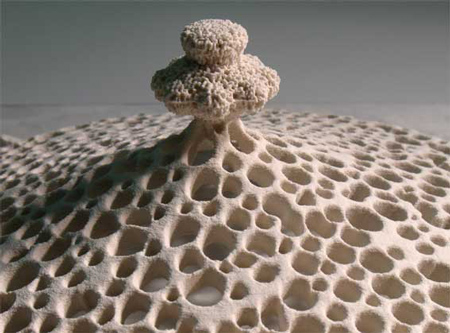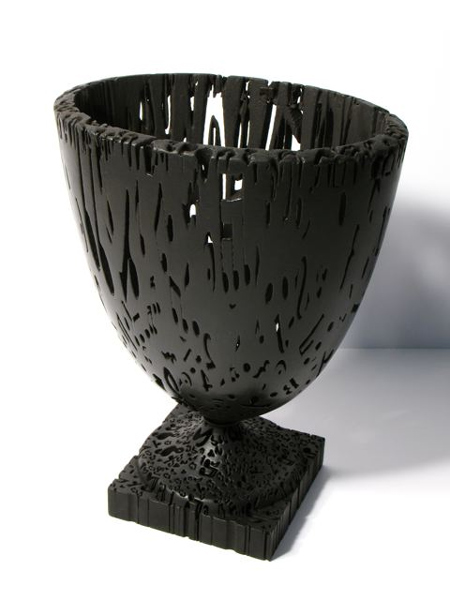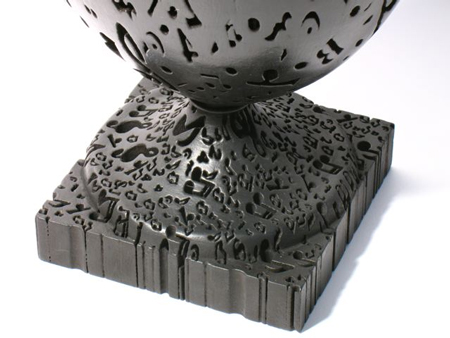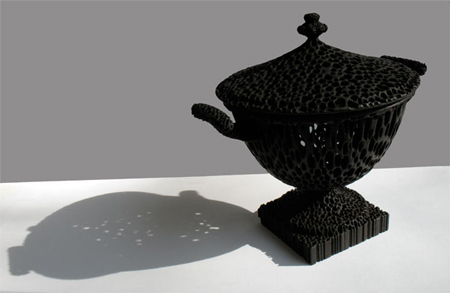
Wedgwoodn’t by Michael Eden
Michael Eden created the Wedgwoodn't tureen by using rapid manufacturing and ceramic materials which don't need firing.

A research student in Ceramics & Glass at the Royal College of Art in London, Eden has been experimenting with methods of 3D printing using digital data to create ceramic objects with the same properties as conventional ceramics.

Visit the project blog for more information.

Here's some text from Eden:
--
Josiah Wedgwoodn’t have been able to undertake this project, but as one of the fathers of the first Industrial Revolution he would certainly be at the forefront of the current Industrial Revolution if he were here today.

The Second Industrial Revolution:
Rapid manufacture [RM] and rapid prototyping [RP] are methods of 3D printing using digital data. A range of materials, from plaster, starch and plastics through to some metals can now be fabricated with increased precision and speed. As yet there are few ceramic materials for use in RM.
The technology has advanced dramatically over the past twenty years and is talked about as the Second Industrial Revolution, yet the present stage of its development is the first Industrial Revolution equivalent to the year 1800.
My entry for the RSA Ceramic Futures competition uses RP and highly innovative ceramic materials to reproduce an iconic ceramic object from the first Industrial Revolution in a way that was impossible in the early 1800’s.
A Ceramic Revolution:
The Wedgwoodn’t project applies new ceramic materials that convert a fragile RP model into a durable product with the same material properties as conventional ceramics. They are non-toxic, food safe, frost resistant, acid and alkali resistant and act as a gas barrier. They can be stained with organic, inorganic or metallic pigments and do not require firing.
Creative Potential:
As RP and RM technology advances and costs fall, there is a vast, untapped creative potential for the application of this technology in the both the industrial and independent sectors of ceramics. The benefits are potentially enormous:
- The application of high specification ceramic materials to products not normally associated with ceramics, from buildings and street furniture to decorative and functional domestic products through to medical uses.
- Freedom for independent ceramic designers and artists to produce work without the usual constraints of expensive equipment and the need to acquire material knowledge which often takes many years. This will give designers the ability to work from anywhere with a broadband connection.
- Freedom from the constraints of traditional manufacturing techniques will allow designers to create forms that were previously impossible or extremely expensive to produce.
- Customisation of designs, with no retooling costs.
- Reduction in the transport of goods as production can be arranged nearest to the customer.
The Wedgwoodn’t tureen has been created as a metaphorical object to demonstrate some of these benefits.